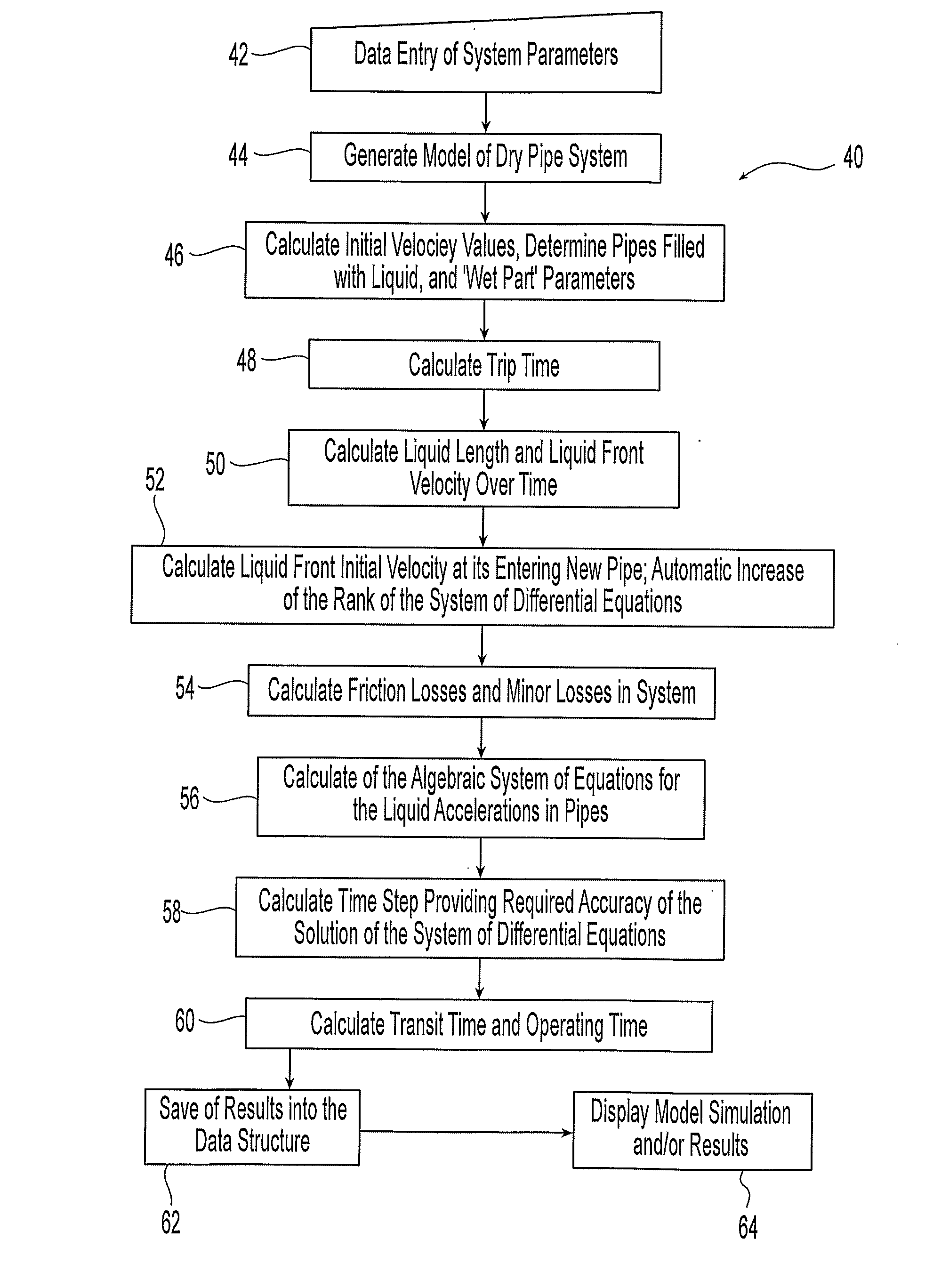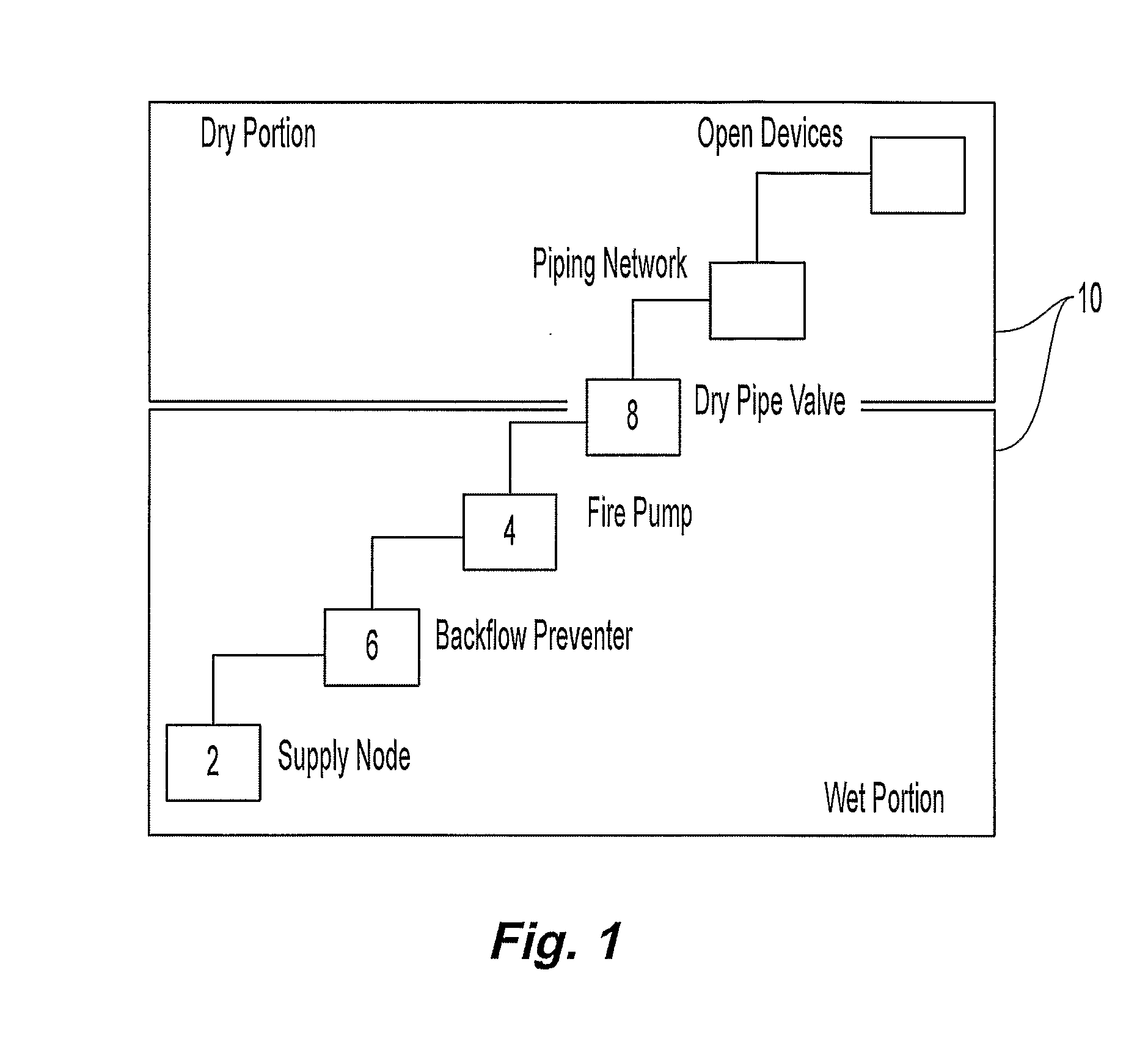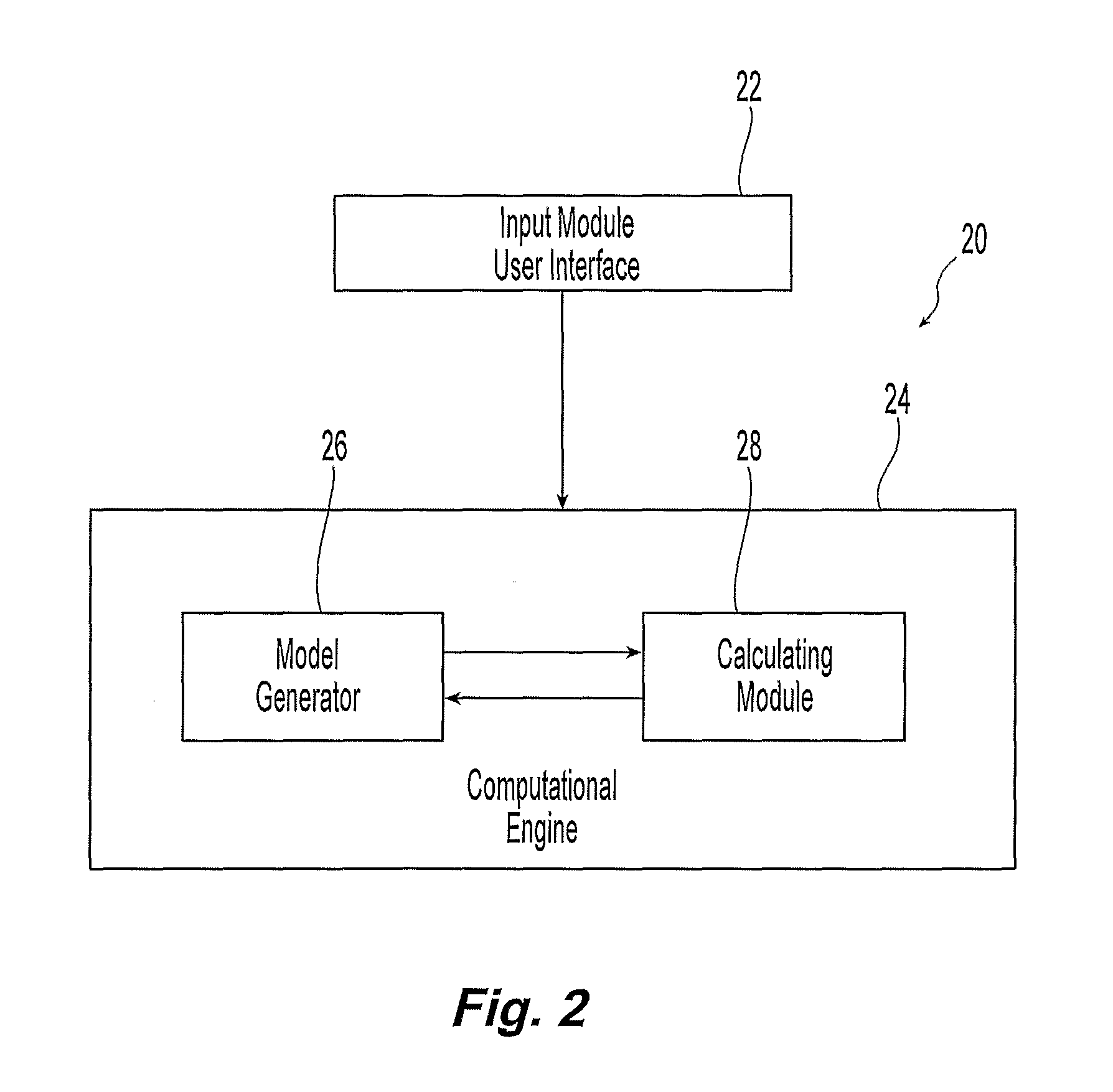System and method for evaluation of fluid flow in a piping system
a fluid flow and system technology, applied in the field of pipe system modeling, can solve the problems of premature corrosion of steel pipes, more difficult to model such piping networks, and fixed topology models that fail to take into account liquid behavior and characteristics,
- Summary
- Abstract
- Description
- Claims
- Application Information
AI Technical Summary
Benefits of technology
Problems solved by technology
Method used
Image
Examples
Embodiment Construction
[0052]Shown in FIG. 1 is an illustrative schematic of a dry pipe sprinkler system 10 having a wet portion and a dry portion. The wet portion of the system 10 can include a fluid supply 2 such as, for example, water or a city water main. The wet portion can further include a fire pump 4, configured to increase the pressure of water flow from the supply 2, and a back flow preventer (BFP) 6 configured to maintain fluid flow in one direction, from the wet portion to the dry portion of the system. The dry portion of the system is preferably separated from the wet portion of the system by a dry pipe valve 8 (DPV). The dry pipe valve 8 can be configured to activate or trip to supply the liquid from the wet portion to a network of pipes, pipe fittings, sprinkler heads and / or valves (not shown) downstream of the dry valve. The network of piping downstream of the DPV 8 is filled with a gas such as, for example, air. The DPV 8 can be activated by a drop in pressure downstream of the valve ther...
PUM
 Login to View More
Login to View More Abstract
Description
Claims
Application Information
 Login to View More
Login to View More - R&D
- Intellectual Property
- Life Sciences
- Materials
- Tech Scout
- Unparalleled Data Quality
- Higher Quality Content
- 60% Fewer Hallucinations
Browse by: Latest US Patents, China's latest patents, Technical Efficacy Thesaurus, Application Domain, Technology Topic, Popular Technical Reports.
© 2025 PatSnap. All rights reserved.Legal|Privacy policy|Modern Slavery Act Transparency Statement|Sitemap|About US| Contact US: help@patsnap.com



